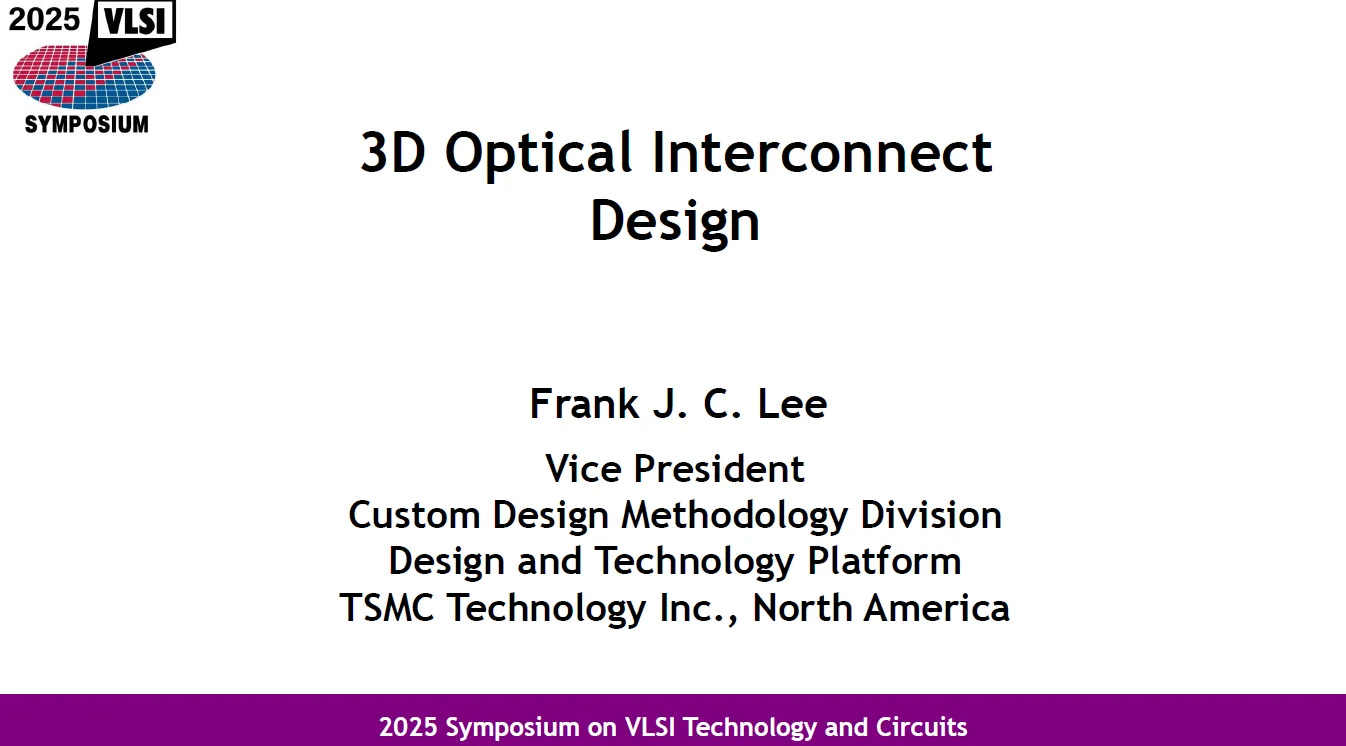TSMC’s Maxwellian Revolution: Redefining VLSI with Silicon Photonics
Original Articles By SemiVision Research (IEEE VLSI , TSMC)
Light as the Cornerstone of Silicon Photonics
In today’s quest for higher-speed computation and lower-power data transmission, silicon photonics has emerged as a foundational technology at the intersection of optics and electronics. At the heart of this field lies a profound physical truth: light is fundamentally an electromagnetic wave, as established by James Clerk Maxwell’s equations in the 19th century. The dynamic interplay between electric and magnetic fields not only explains how light propagates through space and matter, but also forms the theoretical bedrock upon which silicon photonic devices are built.
When light enters a material such as silicon or silicon dioxide, its velocity is determined by the material’s effective permittivity and permeability. This, in turn, governs essential optical behaviors like refraction, reflection, and confinement within waveguides. These principles are central to how silicon photonic systems guide, modulate, and manipulate light on chip-scale platforms.
A key challenge—and opportunity—within this field is the interaction between light and doped silicon. Free carriers (electrons and holes) in conductive regions absorb light energy and convert it to heat, as described by the Drude model. Similarly, bound electrons in dielectric materials exhibit resonant oscillations that cause energy loss, as modeled by the Lorentz oscillator. Together, these mechanisms define the attenuation and phase shift experienced by light in silicon waveguides—parameters that are critical for designing efficient modulators, detectors, and resonators.
In silicon waveguides, each optical mode exhibits predictable phase evolution and attenuation, making it possible to precisely design components such as Mach-Zehnder interferometers and phase shifters. Engineers rely on these modal properties to simulate and optimize photonic circuits that operate with high fidelity and low power.
Key building blocks of integrated photonics, like directional couplers and multimode interference (MMI) couplers, exploit the wave nature of light. Directional couplers transfer energy via evanescent field overlap, enabling fine control of optical power distribution. MMI couplers, on the other hand, use the principle of self-imaging within multimode regions to split light efficiently and robustly—even under fabrication variability. These components are not only compact and CMOS-compatible, but also essential for implementing wavelength-division multiplexers, optical switches, and photonic neural networks.
Ultimately, what makes silicon photonics so powerful is its ability to combine the deterministic behavior of electromagnetic waves with the manufacturing scalability of the semiconductor industry. Understanding how light propagates, interacts, and decays within materials is not just a theoretical exercise—it’s a practical requirement for building the next generation of AI accelerators, optical interconnects, and high-performance computing systems.
By mastering the physics of light and its interaction with matter, engineers and researchers are unlocking a new era of ultra-fast, energy-efficient, and highly integrated photonic technologies. Silicon photonics is not just the future of data—it’s the future of infrastructure itself.
In previous discussions on silicon photonics design, we noted that TSMC introduced many important process and design concepts during the 2025 VLSI Technology Forum. In this article, TSMC shifts its focus to the fundamental physical principles, with a particular emphasis on optical concepts.
For readers who have not yet read the first part of this series, please refer to it here:
The story begins with the fundamental nature of light. At the heart of it all lies the Maxwell equations—an essential cornerstone in understanding electromagnetic phenomena.
When we talk about silicon photonics, the conversation often centers around its advantages—high bandwidth, low power consumption, and seamless compatibility with CMOS fabrication. Yet, beneath these benefits lies a deeper foundation: a fundamental understanding of light as an electromagnetic wave and its precise behavior in guided structures.
At the 2025 VLSI Technology Forum, TSMC not only showcased its innovations in photonic design and process integration but also highlighted the critical role of optical physics in shaping the architecture of modern photonic devices.
This article begins with the basic principle of light as an electromagnetic wave and explores why silicon has become the material of choice for guiding light. We’ll examine how propagation and attenuation influence device performance and how components such as couplers and splitters are engineered to precisely control light distribution.
Whether in high-speed data center interconnects, AI photonic accelerators, or next-generation sensing systems, every application of silicon photonics is built on a deep understanding of wave behavior, energy coupling, and material interaction. This is not just a conversation between physics and engineering—it’s the driving force behind the future of computing and communications.
For Paid Members, SemiVision will discuss topics on
TSMC’s Maxwellian Revolution: Redefining VLSI with Silicon Photonics
Wave Propagation in Materials: Implications from Maxwell’s Equations
Two Primary Loss Mechanisms in Optical Wave Propagation
Light Propagation in Silicon and the Impact of Free Carrier Effects
Modal Propagation Characteristics in Silicon Waveguides
Waveguide Types in Silicon Photonics: Comparison of Metallic vs. Dielectric Guiding Mechanisms
Why Dielectric Waveguides for Silicon Photonics?
Directional Couplers in Silicon Photonics: Evanescent Field-Based Energy Transfer Mechanism
Power Distribution Mechanism in Silicon Photonic Directional Couplers: From Full Transfer to 3 dB Power Splitters
Multimode Interference (MMI) Coupler in Silicon Photonics: Self-Imaging and Design Principles
Common Applications in Silicon Photonics
When to Choose an MMI Coupler?





